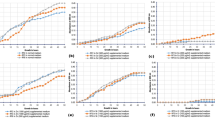Abstract
A group of 15 heavy metal resistant bacteria were isolated from Barak River contaminated with paper and pulp effluents. These isolates displayed different degrees of chromium tolerance. Four isolates showed 34 %–49 % of growth at a concentration of 4.0 mM of Cr6+ and subjected to chromium reduction assay under aerobic condition. The isolate E (4) showed highest reduction (34.38 %) followed by E (3) and K(6)PA6, both showed 28.75 % reduction and then D (2) (27.5 %) after 72 h of incubation. These 4 isolates also showed different degrees of resistance to other heavy metals like Ni, Cu, Co and Cd. Antibiotic sensitivity profile of these selected bacterial strains was determined against 10 different antibiotics. Isolate E (4) appeared to be most susceptible being inhibited by eight antibiotics and resistant to penicillin G and ampicillin. The isolate E (3) was resistant to as many as five antibiotics and showed susceptible responses to the rest of the antibiotics. Both the isolates K(6)PA6 and D (2) were resistant to four antibiotics and showed intermediate to susceptible responses to the rest of the antibiotics.
Similar content being viewed by others
References
Ahmed N, Nawaz A, Badar U (2005) Screening of copper tolerant bacterial species and their potential to remove copper from the environment. Bull Environ Contam Toxicol 74:219–226
APHA (1998) Standard methods for the examination of water and wastewater, 20th edn. American Public Health Association, Washington, DC
Clausen CA (2000) Isolating metal-tolerant bacteria capable of removing copper, chromium and arsenic from treated wood. Waste Manag Res 18:264–268
Ezaka E, Anyanwa CU (2011) Chromium (VI) tolerance of bacterial strains isolated from sewage oxidation ditch. Int J Environ Sci 1:1725–1734
Francisco R, Alpoim MC, Morais PV (2002) Diversity of chromium resistant and reducing bacteria in a chromium contaminated activated sludge. J Appl Microbiol 92:837–843
Ganguli A, Tripathi AK (2001) Inducible periplasmic chromate reducing activity in Pseudomonas aeruginosa isolated from a leather tannery effluent. J Microbiol Biotechnol 11:355–361
Holt JG, Krieg NR, Sneath PHA, Stalely JT, Williams ST (1994) Bergey’s manual of determinative bacteriology, 9th edn. Williams and Wilkins, Baltimore
ISI (1991) Indian standard specification for drinking water (BIS 10500: 1991). ISI, India
Joshi-Tope G, Francis AJ (1995) Mechanisms of Biodegradation of metal-citrate complexes by Pseudomonas fluroescens. J Bacteriol 177:1989–1993
Karrash B, Parrab OH, Cidb M, Mehrensa P, Pachecob R, Urrutiab C, Valdovinosb C, Zarorb C (2006) Effects of pulp and paper mill effluents on the microplankton and microbial self purification capabilities of the Biobio river, Chile. Sci Total Environ 359:194–208
Koshy M, Nayar TV (1999) Water quality aspects of river Pamba. Pollut Res 18:501–510
Malik A (2004) Metal bioremediation through growing cells. Environ Int 30:261–278
Pal A, Paul AK (2004) Aerobic chromat reduction by chromium resistant bacteria isolated from serpentine soil. Microbiol Res 159:347–354
Pal A, Dutta S, Paul AK (2005) Reduction of hexavalent chromium by cell free extract of Bacillus sphaericus AND 303 isolated from serpentine soil. Curr Microbiol 51:327–330
Park CH, Keyhan B, Wielinga B, Fendorf S, Martin A (2000) Purification to homogeneity and characterisation of a novel Pseudomonas putida chromate reductase. Appl Environ Microbiol 66:1788–1795
Pattanapipitpaisal P, Mabbett AN, Finlay JA, Beswick AJ, Paterson-Beedle M, Essa A, Wright J, Tolly MR, Badar U, Ahmed N, Hobman JL, Brown NL, Macaskie LE (2002) Reduction of Cr(VI) and bioaccumulation of chromium by gram positive and gram negative microorganisms not previously exposed to Cr-stress. Environ Technol 23:731–745
Rajbanshi A (2008) Study on heavy metal resistant bacteria in Guheswori sewage treatment plant. Our Nature 6:52–57
Ramteke PW (1997) Plasmid mediated co-transfer of antibiotic resistance and heavy metal tolerance in coliforms. Indian J Microbiol 37:177–181
Rehman A, Ali A, Muneer B, Shakoori AR (2007) Resistance and biosorption of mercury by bacteria isolated from industrial effluents. Pakistan J Zool 39:137–146
Srinath T, Khare S, Ramteke PW (2001) Isolation of hexavalent chromium reducing facultative anaerobes from tannery effluent. J Gen Appl Microbiol 47:307–312
Steel RG, Torrie JH (1992) Principles and procedures of statistics. McGraw-Hill, New York
Sundar K, Vidya R, Mukherjee A, Chandrasekaran N (2010) High chromium tolerant bacterial strains from Palar River Basin: impact of tannery pollution. Res J Environ Earth Sci 2:112–117
Tambekar DH, Dhore HR, Kotwal AD, Shirbhate AP, Solav PB (2008) Prevalence and antibiotic sensitivity profile of human enteric pathogens from water sources in salinity affected villages of Virabha (India). Res J Agric Biol Sci 4:712–716
Trajanovska S, Britz ML, Bhave M (1997) Identification of lead resistant bacteria from a heavily contaminated site. Biodegradation 8:113–124
Ugurlu M, Gurses A, Doger C, Yalcin M (2007) The removal of lignin and phenol from paper mill effluents by electrocoagulation. J Environ Manag 87:420–428
Verma T, Srinath T, Gadpayle RU, Ramteke PW, Hans RK, Garg SK (2001) Chromate tolerant bacteria isolated from tannery effluent. Bioresour Technol 78:31–35
Water Quality Criteria (1972) A report of the committee on water quality criteria. NAS, Washington
WHO (1998) Guideline for drinking water quality. World Health Organisation, Geneva
Acknowledgments
The authors are thankful to Department of Science and Technology (DST) govt. of India, New Delhi for providing financial assistance under DST-NER FIST package.
Author information
Authors and Affiliations
Corresponding author
Rights and permissions
About this article
Cite this article
Rajkumar, B., Sharma, G.D. & Paul, A.K. Isolation and Characterization of Heavy Metal Resistant Bacteria from Barak River Contaminated with Pulp Paper Mill Effluent, South Assam. Bull Environ Contam Toxicol 89, 263–268 (2012). https://doi.org/10.1007/s00128-012-0675-y
Received:
Accepted:
Published:
Issue Date:
DOI: https://doi.org/10.1007/s00128-012-0675-y




